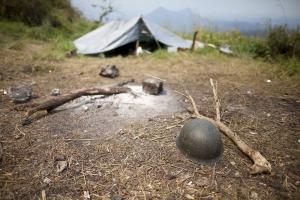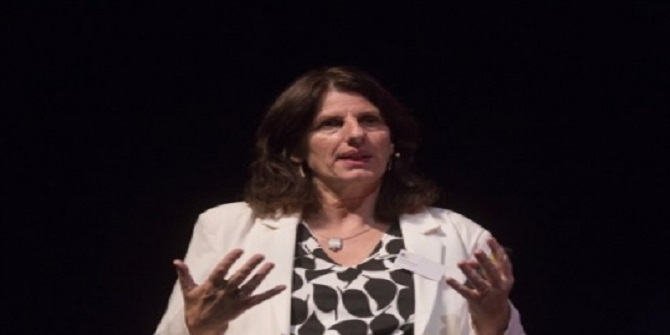Claims of being ‘sons of the soil’ or ‘indigenous’ inhabitants as opposed to ‘foreigners’ play a prominent role in violent conflict around the world. Yet, as this blog argues, the violence occurring in these settings is not always directly related to these claims.
The recent upsurge of global attention to intensifying refugee and migrant streams has revealed once again the performative power of autochthony discourses around the globe. At the heart of these discourses stands the powerful claim of ‘having been born from the soil itself, and the related dichotomy between ‘original/indigenous inhabitants’ vs. ‘foreigners/’immigrants’. This dichotomy can be flexibly applied in a range of contexts at different scales-from local to global- and often overlaps with other forms of social identification, like ethnicity.
In certain contexts, autochthony discourses are ascribed a prominent role in political violence, prompting some analysts to use the term ‘Sons of the Soil’ (SoS) conflicts. Others have also applied the label to qualify acts of violence, speaking of ‘autochthonous violence’. These qualifications bear a certain danger-given the multitude of dynamics and factors at play within the production of both conflict and violence, how do we know that the ‘original inhabitant vs. outsider’ dichotomy is the main driver? The dangers here are similar to labeling conflicts or violence as ‘ethnic’, which suggests that ‘ethnicity’ is the principal cause or overarching dynamic. This question is not merely of analytical relevance: misdiagnosing the drivers of conflicts and violence might lead to misguided interventions.
 The labeling of violence as ‘autochthonous’ risks conflating conflicts with violence. While the two are generally closely related, it concerns distinct social phenomena that are produced by different sets of factors, and therefore merit disaggregated analysis. This applies even stronger where violence is enacted by armed groups. While these groups are often linked to conflict parties claiming to be ‘sons of the soil’, their practices are also shaped by interests and considerations that are distinct from the larger communities they state to defend. How then does armed group violence relate to discourses of autochthony?
The labeling of violence as ‘autochthonous’ risks conflating conflicts with violence. While the two are generally closely related, it concerns distinct social phenomena that are produced by different sets of factors, and therefore merit disaggregated analysis. This applies even stronger where violence is enacted by armed groups. While these groups are often linked to conflict parties claiming to be ‘sons of the soil’, their practices are also shaped by interests and considerations that are distinct from the larger communities they state to defend. How then does armed group violence relate to discourses of autochthony?
In a recent article I explore this question for one subarea of the eastern Democratic Republic of the Congo. Due to a complex set of historical developments, including colonial-era processes of the territorialization of ethnicity, ‘sons of the soil’ discourses have come to play an important role in conflicts in this region. These discourses pit self-styled ‘autochthonous’ groups against a flexibly defined category of ‘Rwandophones’ (speakers of Kinyarwanda and related languages). This conflict narrative is also brandished by armed groups claiming to defend one side or the other. The most powerful example are groups commonly known as ‘Mai Mai’, who state to defend ‘autochthonous communities’ against ‘foreign invaders’.
By studying the discourses and patterns of violence of one specific Mai Mai group, I tried to gauge to what extent and how the language of autochthony informs its practices of violence. Surprisingly, while this armed group operates near an area inhabited by a Rwandophone community, most of their violence is not directed against civilians or combatants from this group. Rather, it targets government soldiers, economic operators and road users of different backgrounds on the one hand, and members of its own ethnic group on the other. Much of this violence is primarily related to revenue generation and establishing, maintaining, and expanding social control over the Mai Mai’s own constituency. Therefore, their practices of violence do not seem predominantly or linearly informed by the desire to harm or defend against the non-indigenous Other.
This does not imply that considerations of autochthony are entirely absent. Violence is the product of multiple, interacting, and overlapping processes, and ‘sons of the soil’ thinking may well play a part in certain of these, without being the primary driving force. Furthermore, autochthony remains the central discourse in which the Mai Mai frame their violent practices, portraying these as ‘necessary acts of self-defence’ in the light of ‘foreign aggression’. Yet, there is no linear connection between these mobilizing and justifying narratives and actual practices of violence. Even members of the Mai Mai’ own ethnic group who sympathize with their cause sometimes fail to see this connection, condemning certain violent incidents as excessive, and not as ‘legitimate self-defence’.
In sum, ‘sons of the soil’ discourses play mostly a secondary role in the Mai Mai’s practices of violence, rendering it inappropriate to label this violence ‘autochthonous’. While these findings only relate to one particular armed group in one particular setting, they do raise questions regarding claims about the relations between ‘sons of the soil’ discourses and violence more generally. These claims are not always grounded in the detailed empirical study of the occurrence, forms, patterns, perpetrators of, and motives behind violent acts. In some cases, they are rather based on the study of (violent) conflict, and the discourses that are locally employed to frame violence. Yet, without the detailed analysis of violence itself, qualifying it as ‘autochthonous’ is unwarranted. Such labeling is also dangerous, as it may have essentializing effects. Moreover, it risks deflecting attention from the other factors underlying violence, thereby hampering the formulation of adequate responses.
Photo credit: United Nations Photo / Foter.com / CC BY-NC-ND
Note: articles present the views of their authors, and not necessarily the position of the Justice and Security Research Programme, nor of the London School of Economics and Political Science.





